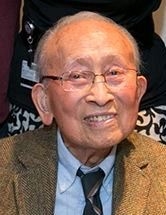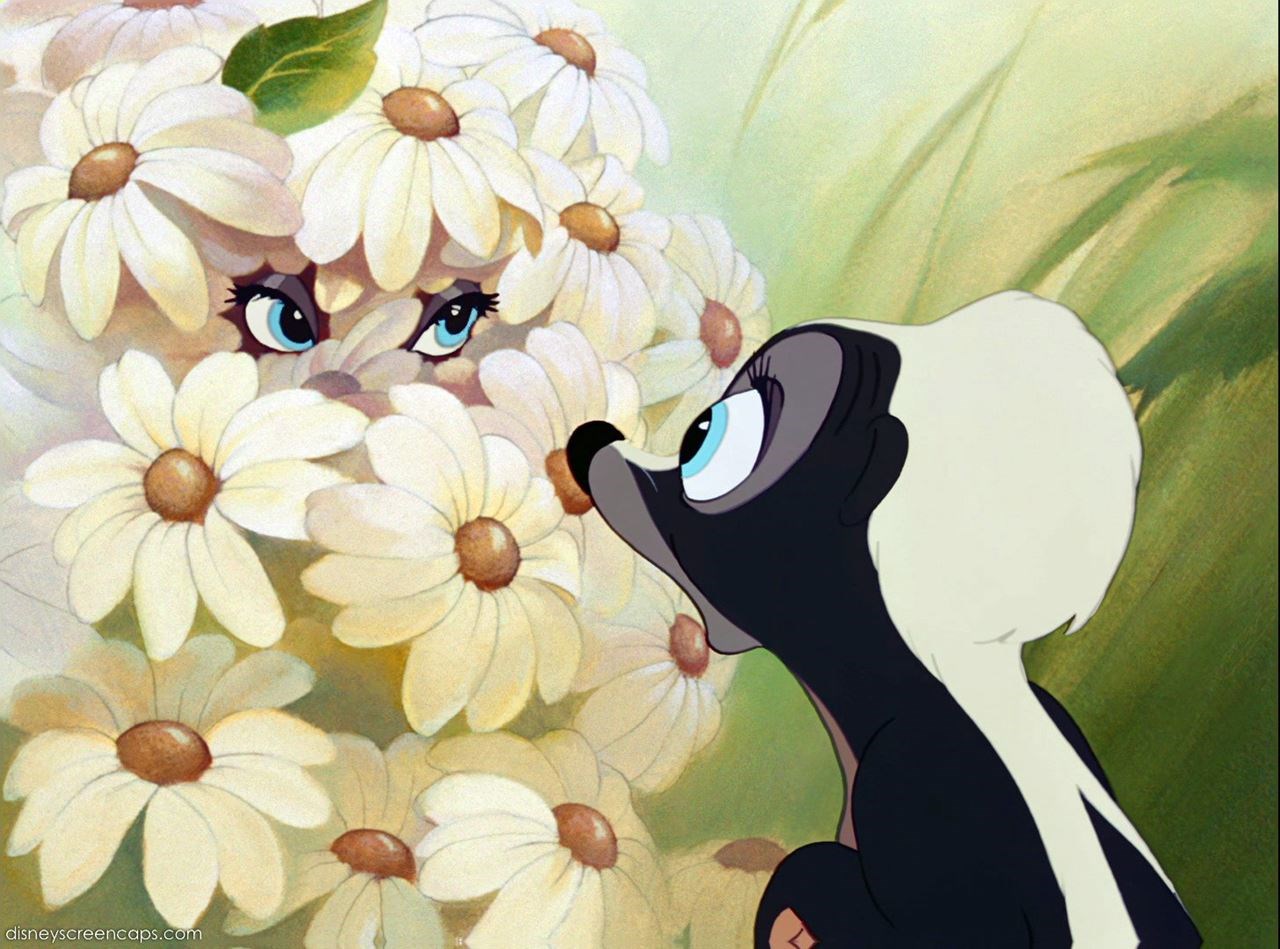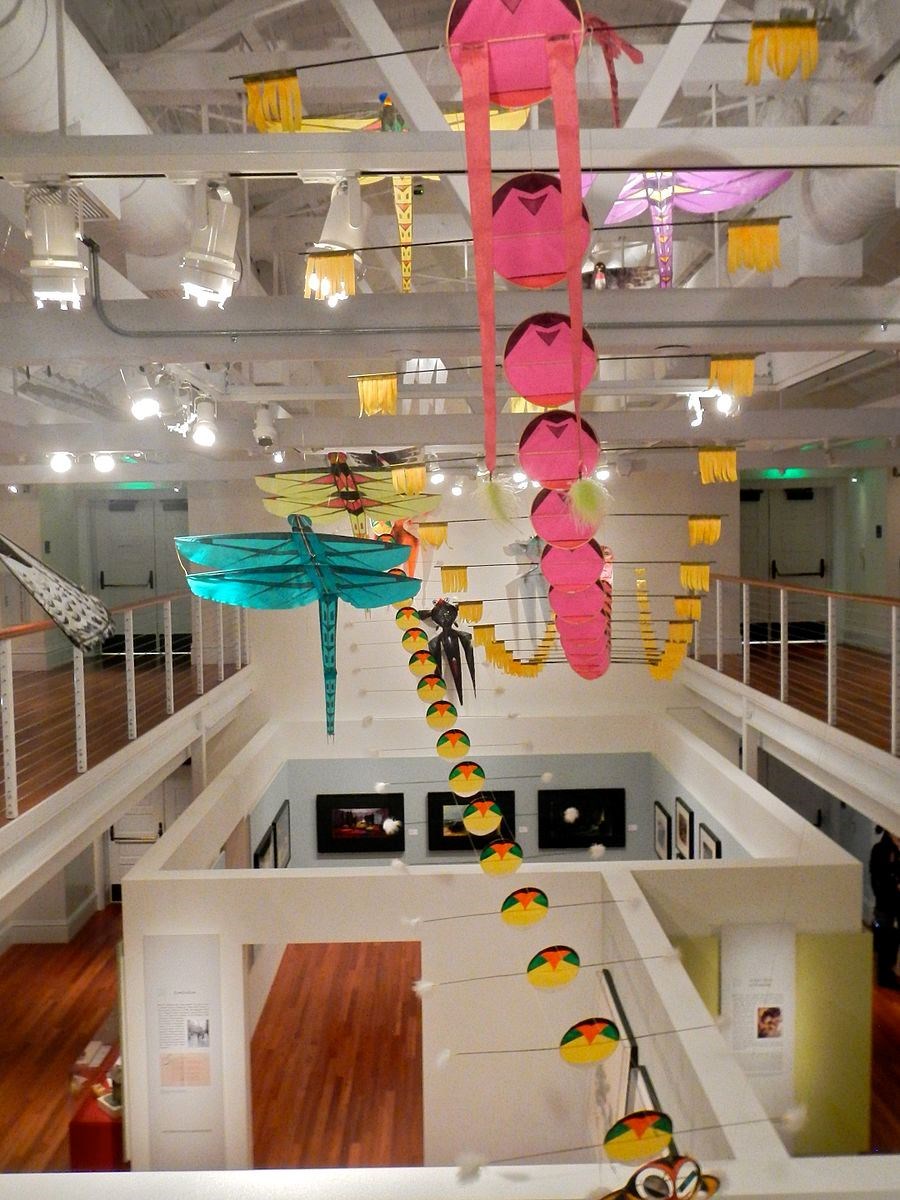 Tyrus Wong Wikimedia Commons In the words of Tyrus Wong, “If you do a painting with five strokes instead of ten you can make your painting sing.” This quote represents Wong’s style of keeping art simple while taking the approach of less can mean more. This philosophy was a perfect representation of Wong’s life journey. Wong Gen Yo was born on the 25th of October, 1910 in Guangdong, China. His family wasn't wealthy, and during this time period China was facing great poverty. Wong and his father immigrated to the U.S. in search of better opportunities, leaving his mother and sister behind. Upon arriving, he eventually adopted the name Tyrus. Throughout school, Tyrus was a troubled kid, but he enjoyed drawing and painting and was eventually awarded a scholarship to the Otis Art Institute. At the institute, Wong studied Western art, as well as China’s Sung Dynasty style, which would later go on to heavily influence his artwork. He eventually began working for companies such as Disney and Warner Brothers. Throughout his career, Tyrus was able to overcome discrimination, blend Eastern and Western aesthetics in the American classic Bambi, and pave the way for other artists to incorporate their culture and experiences into their own art.
Tyrus Wong Wikimedia Commons In the words of Tyrus Wong, “If you do a painting with five strokes instead of ten you can make your painting sing.” This quote represents Wong’s style of keeping art simple while taking the approach of less can mean more. This philosophy was a perfect representation of Wong’s life journey. Wong Gen Yo was born on the 25th of October, 1910 in Guangdong, China. His family wasn't wealthy, and during this time period China was facing great poverty. Wong and his father immigrated to the U.S. in search of better opportunities, leaving his mother and sister behind. Upon arriving, he eventually adopted the name Tyrus. Throughout school, Tyrus was a troubled kid, but he enjoyed drawing and painting and was eventually awarded a scholarship to the Otis Art Institute. At the institute, Wong studied Western art, as well as China’s Sung Dynasty style, which would later go on to heavily influence his artwork. He eventually began working for companies such as Disney and Warner Brothers. Throughout his career, Tyrus was able to overcome discrimination, blend Eastern and Western aesthetics in the American classic Bambi, and pave the way for other artists to incorporate their culture and experiences into their own art.
Tyrus Wong’s upbringing made him the person he was. Immigrating to the U.S. in 1919, Tyrus encountered harrowing experiences when arriving at Angel Island in San Francisco. (Angel Island was considered the Ellis Island of the West, but its main purpose was to keep the Chinese from entering the U.S.) Upon arriving he was separated from his father and taken into custody by the U.S. government, where they interrogated him at length. “It’s a very lonely situation. There were no other kids but myself. And I don't speak English. So, I just suffered, you know? Every day was just miserable” (“The Legacy of Tyrus Wong.”). It wasn't until a month later when Tyrus had satisfied all of their inquiries that he was finally reunited with his father. The time he spent in the “woodhouse” at Angel Island demonstrated how it was a harrowing experience. As he was a child without his father, you can imagine how alone he felt and how terrifying it must have been not being able to understand, speaking very little or no English. As immigrants to the U.S., both Tyrus and his father worked various labor jobs (servant/waiter, janitor) to make ends meet. His father eventually saved and borrowed money to send Tyrus to the Otis Art Institute, as he believed in his son’s artistic talent. Wong eventually got a job working as an entry-level artist at Disney. It was considered grunt work that he didn't find enjoyable. At work Wong faced racial bias: “Asians were then a novelty at Hollywood Studios, One co-worker flung a racial epithet at him” (Fox Margalit “Tyrus Wong 'Bambi' Artist Thwarted by Racial Bias Dies at 106”). At the time, there was very little minority representation in films and cartoons, as well as behind the scenes of the film industry. From fleeing his native country to working odd jobs and facing racism, Tyrus Wong overcame many obstacles.
 A scene from the Disney movie "Bambi" that is inspired by Tyrus Wong's art styleWikimedia Commons
A scene from the Disney movie "Bambi" that is inspired by Tyrus Wong's art styleWikimedia Commons Some of Tyrus' kites that he made are displayed at the Walt Disney Family MuseumWikimedia CommonsWong saw a perfect opportunity to display his style of painting through Disney’s classic Bambi. Going back to his days at the Otis Art Institute, he developed an art style that consisted of combining Eastern and Western influence that represented and combined his past and present. This style of art represents what he had studied at the institute and his own culture. It didn't focus on the finer details but rather the color, shape, and composition of the objects within the piece. His art had eventually caught the eyes of Tom Codrick and Walt Disney, and from that moment forward, Wong’s career at Disney advanced quickly. He eventually became the lead artist for the classic film, with his main job being the background and scenery art. Unfortunately for Tyrus, he was discriminated against and many of his co-workers resented his authority. People treated him differently because he was Chinese, and because he had an accent (“The Legacy of Tyrus Wong.”). During that time it wasn't common for Asian artists to have higher-up positions in the film industry. Some of his co-workers resented taking direction from him, as they didn't respect him as an artist or lead. His amazing work in Disney’s Bambi didn't initially receive the recognition it deserved. Despite being the lead artist for the Disney classic, he was only listed as a background artist in the rolling credits. It was not until decades later that his work on Bambi was eventually recognized by Disney. It was included in the art exhibit at the Walt Disney Family Museum “Water to Paper, Paint to Sky” that overlooked the San Francisco Bay where Angel Island was located (Fox Margalit “Tyrus Wong 'Bambi' Artist Thwarted by Racial Bias Dies at 106”). With the museum overlooking Angel Island, where Wong first arrived in the U.S. in 1919, it was symbolic of his long journey of bravery, hard work, perseverance, and dedication to achieving his life passion and turning it into a success.
Some of Tyrus' kites that he made are displayed at the Walt Disney Family MuseumWikimedia CommonsWong saw a perfect opportunity to display his style of painting through Disney’s classic Bambi. Going back to his days at the Otis Art Institute, he developed an art style that consisted of combining Eastern and Western influence that represented and combined his past and present. This style of art represents what he had studied at the institute and his own culture. It didn't focus on the finer details but rather the color, shape, and composition of the objects within the piece. His art had eventually caught the eyes of Tom Codrick and Walt Disney, and from that moment forward, Wong’s career at Disney advanced quickly. He eventually became the lead artist for the classic film, with his main job being the background and scenery art. Unfortunately for Tyrus, he was discriminated against and many of his co-workers resented his authority. People treated him differently because he was Chinese, and because he had an accent (“The Legacy of Tyrus Wong.”). During that time it wasn't common for Asian artists to have higher-up positions in the film industry. Some of his co-workers resented taking direction from him, as they didn't respect him as an artist or lead. His amazing work in Disney’s Bambi didn't initially receive the recognition it deserved. Despite being the lead artist for the Disney classic, he was only listed as a background artist in the rolling credits. It was not until decades later that his work on Bambi was eventually recognized by Disney. It was included in the art exhibit at the Walt Disney Family Museum “Water to Paper, Paint to Sky” that overlooked the San Francisco Bay where Angel Island was located (Fox Margalit “Tyrus Wong 'Bambi' Artist Thwarted by Racial Bias Dies at 106”). With the museum overlooking Angel Island, where Wong first arrived in the U.S. in 1919, it was symbolic of his long journey of bravery, hard work, perseverance, and dedication to achieving his life passion and turning it into a success.
Tyrus Wong faced many obstacles, and through it all, he created a legacy for himself that would go on to inspire and impact present artists and animators. A huge part of his legacy was his work with Disney. Bambi was Wong’s most acclaimed achievement, as he was an integral part of the production’s process: “He was the designer; he was the person they went to when they had questions about color, about how to lay something out. He even influenced the music and the special effects: just by the look of the drawings, he inspired people” (Fox Margalit “Tyrus Wong 'Bambi' Artist Thwarted by Racial Bias Dies at 106”). The art that he created for the film moved people and influenced other artists even if they weren't part of the same department. When Wong put an image to the background of the movie scenes, he was able to create feeling and meaning within the brush strokes of the art. Whether it was a foggy, snowy, or fiery scene, he created atmospheric styles that left a deep impression. The brush strokes gave the audience an idea of the different layers of leaves in a bush or tree, and the colors he used in his artwork raised the emotional stakes in scenes. That feeling inspired his co-workers to create music, characters, special effects and tone for the movie that mimics the same feeling/meaning. Having such an influential part within the movie’s production left a name for Wong: “His legacy will always be connected to Bambi, it created such beauty, poetry, and lyricism” ("'Bambi' Artist Tyrus Wong Dies At 106" ). With this legacy, he impacted other artists and animators to strive for a similar goal. His influence can be seen through animators today like Pete Docter, Ronnie del Carmen, and Ralph Eggleston - they all look to his work for inspiration ("'Bambi' Artist Tyrus Wong Dies At 106" ). His work inspires current artists to improve while staying true to their unique style. The inspiration that he gives others adds to how he is a hero, inspiring others to be the best version of themselves.
Tyrus Wong overcame many struggles throughout his lifetime to achieve his goals and accomplishments. He inspired others through his art to draw from their life experiences and cultures to create their own unique art style. He became a hero to many upcoming artists looking for their start. He showed them how he was able to come from a difficult childhood and endure racism and hardship, to become someone successful and finally recognized in his 90s. He’s a hero to me because I strive to achieve the goal of inspiring others through my own art and animation. He was able to show me that it’s possible to attain your goals and dreams, even if it comes much later on in your life, and to not give up. He inspires me to continue to put forth my best effort in my artwork and to keep trying my hardest to make it big in the art and film industry.
Works Cited
"'Bambi' Artist Tyrus Wong Dies At 106." All Things Considered, 3 Jan. 2017. Gale In Context: High School, https://link.gale.com/apps/doc/A476900347/SUIC?u=powa9245&sid=SUIC&xid=005fd5c6. Accessed 19 Dec. 2019.
Fox, Margalit. “Tyrus Wong, 'Bambi' Artist Thwarted by Racial Bias, Dies at 106.” The New York Times, The New York Times, 31 Dec. 2016, www.nytimes.com/2016/12/30/movies/tyrus-wong-dies-bambi-disney.html.
Leung, Julie, and Chris Sasaki. Paper Son: the Inspiring Story of Tyrus Wong, Immigrant and Artist. Schwartz & Wade Books, 2019.
“Oral History Interview with Tyrus Wong, 1965 January 30.” Archives of American Art, Smithsonian Institution, www.aaa.si.edu/collections/interviews/oral-history-interview-tyrus-wong-13010#transcript
“The Legacy of Tyrus Wong.” PBS, Public Broadcasting Service, 18 Sept. 2017, www.pbs.org/wnet/americanmasters/tyrus-about-the-film/8917/.
"Tyrus Wong, long overlooked animator of 'Bambi,' dies at 106." Washingtonpost.com, 6 Jan. 2017. Gale In Context: High School, https://link.gale.com/apps/doc/A476717240/SUIC?u=powa9245&sid=SUIC&xid=9da096d7. Accessed 19 Dec. 2019.
"Tyrus Wong." Gale Biography Online Collection, Gale, 2019. Gale In Context: Biography, https://link.gale.com/apps/doc/K1650011691/BIC?u=powa9245&sid=BIC&xid=097005f4. Accessed 19 Dec. 2019.
Page created on 2/12/2020 4:48:59 AM
Last edited 2/17/2020 1:09:29 AM
